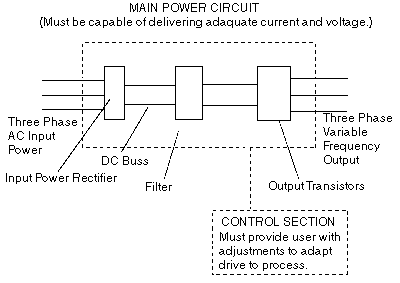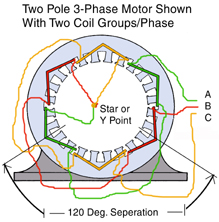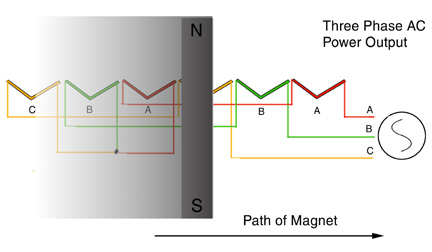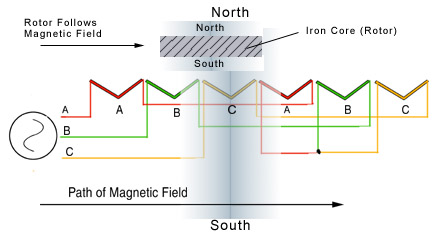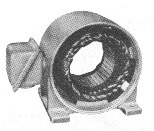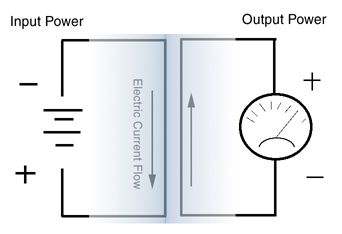 
|
explosion proof VFD,HazLoc softstarter, motor soft starter, vector control variable speed drive (VSD, variable frequency drive, AC drive, inverter), reactor, sine wave filters, power electronics: quality as ABB, Siemens.
|
What are AC Drives
The word "drive" is used loosely in the industry. People involved primarily in the world of gear boxes and pulleys refer to any collection of mechanical and electro-mechanical components, which when connected together will move a load, as a "drive". When speaking to them, the AC drive may be considered by them as the variable frequency inverter and motor combination. It may even include the motor's pulley - I am not sure.
People in the electrical field and electrical suppliers usually refer to a variable frequency inverter unit alone, or an SCR power module alone (when discussing DC drives) as the "drive" and the motor as the "motor".
Manufacturers of variable frequency drives (VFDs) used to refer to the drive as just that, a "variable frequency drive". More manufacturers are referring to their drive as an "adjustable speed AC drive". To make matters worse when a motor is included in the package, it may be referred to as an "adjustable speed AC drive system".
A variable frequency drive (VFD) is an adjustable speed drive (ASD). Adjustable speed drives (ASDs) include all types of mechanical and electrical. Now is it clear? Don't worry about it. It's not clear to anyone. As you read on, when I refer to the "drive" I am referring to the variable frequency inverter alone.
A little about AC drives
The main power components of an AC drive, have to be able to supply the required level of current and voltage in a form that the motor can use. The controls have to be able to provide the user with necessary adjustments, such as minimum and maximum speed settings. So that the drive can be adapted to the user's process. Spare parts have to be available and the repair manual has to be readable. It's nice if the drive can shut itself down when detecting either an internal or an external problem. It's also nice if the drive components are all packaged in a single enclosure to aid in installation but that's about it.
|
Ambiguous Motor Theory
The real action in an AC variable frequency drive (VFD) system is in the motor. This is really where it all happens.
To be an AC drive application Wizard (which is several levels higher then Guru), one must understand how motors use electric power. It is essential. I can't emphasize this importance.
All loads moved by electric motors are really moved by magnetism. The purpose of every component in a motor is to help harness, control, and use magnetic force. When applying an AC drive system, it helps to remember you are actually applying magnets to move a load. To move a load fast does not require more magnets, you just move the magnets fast. To move a heavier load or to decrease acceleration time (accelerate faster), more magnets (more torque) are needed. This is the basis for all motor applications.
Where does the real action happen in a AC drive system?
|
|
|
A Side Note About Fishing, Electro-magnets, Current, and Magnetic Conductivity
When we go fishing, we put bait on a hook and throw it in water, knowing that according to generally accepted theory, a hungry fish will bite, sooner or later. Well the truth is we don't know why the fish bite. No one to date, has talked to a fish (well maybe a few people talk to fish). The fact that we get hungry and therefore fish must too, seems like a safe assumption. But it doesn't really matter because we do know that putting bait on a hook will get fish into the boat.
Magnetism and electricity are the same way. We have some well accepted theories that we can use to explain how magnets can move our load. But no one really knows what magnetism and electricity are (regardless of what they say). When it comes to using magnetic force to move our load, how it works just doesn't matter. We do know that it works. We have even noticed a few peculiar things.
We have noticed that when you wrap a coil of wire around a piece of iron and apply electric current, the piece of iron becomes magnetic. We call this an electro-magnet.
|
- After we apply the electric current, the magnet field grows at a finite rate to a finite size.
- After voltage is applied and full current is reached, which always takes a little time, the field quits growing and becomes a constant size. If we increase the applied voltage, the field grows and becomes stronger. Decrease the applied voltage, the field weakens and shrinks.
- When we remove electric power to the coil, the field does not just disappear. It just decreases in size until it does disappear. It collapses over time so to speak.
- The more current our coil draws (which we can force by increasing the applied voltage level), the stronger and larger our magnetic field becomes. I know I said it twice. It's that important.
- When we increase voltage to our electro-magnet, current will increase directly proportional up to a point. After that point, the current increases exponentially. THIS IS IMPORTANT! Generally accepted theory says that the iron core or any material, can only conduct a limited amount of magnetic flux. Once that point is reached, current can become very high with a very small increase in voltage. This is called magnetic saturation and is sometimes seen in motor applications. Motor life becomes very short when the core reaches saturation - about 15 seconds in some cases. We will look at this and some of the causes later.
- Some energy is consumed by simply magnetizing the iron core. Different materials consume different amounts of energy. This is usually considered an energy loss.
- Some energy is converted into heat within the iron core. Different materials convert different amounts of energy. This is also usually considered an energy loss.
- Once a core is magnetized, demagnetization and reverse polarity re-magnetization consumes more energy and takes quite a long time, relatively speaking. (Remember, an existing field has to collapse over time.) The amount of this loss is proportional to the frequency of polarization reversals. This happens 120 times per second when operating an AC motor at 60 hertz. We will touch on the importance of this later. (Are you beginning to see where all this is going?)
The Magnets within the Motor and Torque
Motors are designed so that the electro-magnets are made as strong as possible with acceptable risk of core saturation. This will maximize the torque capability of the motor but also means that during normal operation every motor may at some point, operate close to saturation. How close a motor runs to saturation depends upon the amount and type of core material used. So naturally, this point varies from manufacturer to manufacturer. There really is a difference in motors and you get what you pay for. |
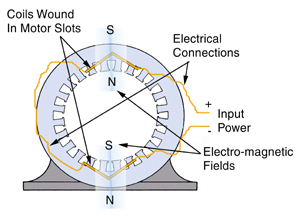 |
 |
The motor above is shown with two field coils, one for each magnetic pole. In the industry this would be called a "two pole motor". For simplicity, only one phase is shown. In reality, a 3-phase, two pole motor requires six coils, evenly spaced around the core - a minimum of two coils is required, to generate two electro-magnetic poles, for each of the three phases.
A coil-ectomy
The most widely used AC motor in industry is the 5 horsepower, 1800 RPM, 60 Hz, 3-phase AC motor. (I can't prove this but it might be true.) In order for a motor to run 1800 RPM at 60 Hz it would have to be wound with four magnetic poles.
Important Motor Formula |
|
An AC motor referred to, in the industry, as an 1800 RPM motor will be name-plated with a speed of something less, usually around 1735 RPM. This is a typical RPM rating but can be higher or lower. The difference between the synchronous and the actual RPM is called "slip". Adjusting slip is an important technique in AC drive applications. A lot more about slip will come later.
| 60 HZ x 120 |
|
| If you could remove the coils from the above motor without breaking a connection, and lay them side-by-side, this is what you would have. What is shown are three phases: A, B, and C phase connected together (see the arrow) at a "star" or "Y" point. There are other motor connection schemes but this is the most typical: |
|
AC Generator |
If a magnet is passed along the coils, an electric current is generated in each of the three phases. In fact, there is little difference between AC generator and motor field windings. |
|
AC Motor |
|
When an iron core is placed so a moving magnetic field passes through it, a magnet field is generated within the iron core. It takes time to generate a field therefore, the new field reaches peak strength after the peak of the generating field has passed. The rotor is "pulled" by the magnetic field thus producing torque. |
|
| The magnetic field has to pass through the rotor to generate a rotor field and pull. If the rotor travels at the same speed as the magnetic field, induction into the rotor will cease, the magnetic field will disappear and the rotor will lose its pull and slow down. Pull (torque) is obtained when fields are passed through the rotor in quick succession. Remember though, it takes a long time to generate a field. If the frequency of fields passing through the rotor is too high, effectiveness is lost? If the frequency of the generating field is held constant, and the torque is great enough to move the rotor, the rotor will reach an equilibrium speed where at any higher speed induction and torque are reduced and the rotor slows down. | |
Typical Rotor |
Typical Stator |
|
|
When an electric current is applied to a conductor a magnetic field builds around that conductor. If another conductor is in close proximity so that the building magnet field "cuts" through that conductor, a current of equal potential is produced with flow in the opposite direction of the original current. This conductor is called the secondary circuit and the principal is called induction. |
|
If the number conductors in the secondary is increased the output potential is increased in direct proportion. The inverse is also true. This is called transformer action. It is because of transformer action that a current is created in the rotor (secondary circuit) of an AC induction motor and a resulting magnetic force, within and around the rotor, is also created. |
If the magnetic field reaches maximum strength and quits growing, the current flow in the secondary returns to zero regardless of the level of current flow in the primary. In other words, there is a secondary current generated only when the magnetic field is changing state. |


 Photo Gallery |CE certificate |superb components
Photo Gallery |CE certificate |superb components |
| © 2016 V&T All rights reserved. |
 Our Expertise Is Your Guarantee!Leading manufacturer and supplier industrial automation, motor control, motion control and energy efficiency. |
